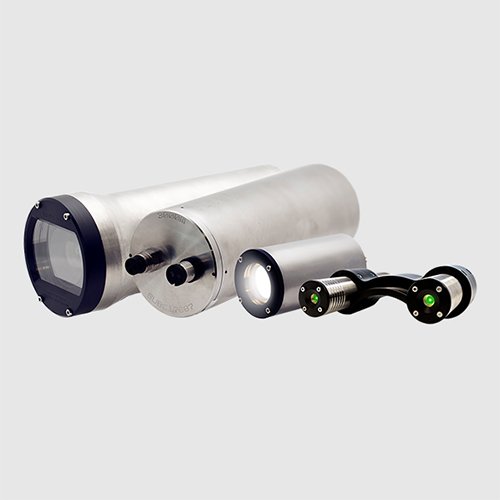The Role of Time-lapse Technology in Environmental Monitoring
Tracking environmental changes over time is essential for understanding ecosystems, biodiversity, and climate impacts. However, continuous monitoring can be difficult, especially in places where conditions change slowly or access is limited. Time-lapse technology helps by capturing images at set intervals, providing researchers with a clear view of long-term patterns without constant human presence. Whether used for studying marine life, monitoring habitat shifts, or assessing environmental impacts, time-lapse imaging makes data collection more efficient and reliable. SubC Imaging’s Autonomous Timelapse System is designed for this purpose, offering high-quality, long-term monitoring for a range of applications, from ocean research to conservation efforts.
This article explores the role of time-lapse technology in environmental monitoring, the challenges it helps solve, and how the right tools—like SubC’s Autonomous Timelapse System—are making long-term data collection more accessible and effective.
What is Environmental Monitoring?
Environmental monitoring is the process of systematically collecting data to assess changes in ecosystems, biodiversity, and climate over time. It involves tracking physical, chemical, and biological parameters in various environments, from deep-sea ecosystems to terrestrial habitats. Scientists and researchers use environmental monitoring to detect trends, identify threats, and develop strategies for conservation and sustainable resource management. By continuously observing these changes, decision-makers can implement policies that help mitigate environmental impacts and protect vulnerable ecosystems.
Why Environmental Monitoring Matters
Ecosystems evolve gradually, and many environmental issues develop over extended periods. Monitoring is essential for understanding these shifts, tracking species behavior, and assessing human impact. However, traditional monitoring presents significant challenges. It often requires extensive resources, demands frequent equipment maintenance, and struggles with power limitations that restrict the duration of data collection. These constraints make it difficult to gather continuous and reliable information, leaving critical knowledge gaps in our understanding of long-term environmental changes. Time-lapse technology provides a solution by offering automated imaging that captures progressive transformations without constant human intervention.
How Time-lapse Technology Helps with Environmental Monitoring
Time-lapse cameras function by taking images at predetermined intervals, allowing researchers to piece together a chronological sequence that reveals patterns invisible in real-time observation. This capability is particularly useful for studying seasonal variations in marine ecosystems, monitoring coastal erosion, and tracking habitat loss. It enables scientists to observe animal behavior over extended periods without disrupting their natural environment and provides an invaluable tool for investigating deep-sea conditions that would otherwise remain out of reach. By delivering visual documentation of changes that unfold slowly, time-lapse imaging allows for more precise analysis and a deeper understanding of environmental processes.
See time-lapse technology in action—this video captures how SubC Imaging’s Autonomous Timelapse System is used for long-term underwater monitoring at a highly active methane seep site off the coast of Oregon.
Choosing the Right Tools for Environmental Time-lapse Monitoring
Selecting the right tools for time-lapse monitoring is essential for capturing meaningful environmental data. SubC Imaging’s Autonomous Timelapse System is designed to meet this need, providing a reliable, long-term solution for independent operation in extreme underwater environments This system enables researchers to customize time-lapse schedules, adjusting camera settings to suit specific study requirements. Equipped with high-definition imaging capabilities, it captures 4K video and 12.3 MP digital stills with adjustable white balance and exposure, ensuring superior image quality in varying underwater conditions.
One of its standout features is the hibernation mode, which allows the system to power down between imaging events, drastically extending deployment durations. This feature reduces energy consumption, making it possible to operate in remote locations for months or even years without frequent battery replacement. Researchers can optimize power usage by setting custom intervals for image capture, ensuring that energy is only used when necessary.
The visual script builder provides an intuitive way for researchers to program the system without requiring advanced coding knowledge. Users can create customized scripts that define time-lapse schedules, set event-based triggers, and control lighting and laser functions. This flexibility allows researchers to tailor the camera’s behavior to specific environmental conditions, ensuring they capture the most relevant data for their studies.
By integrating optional biofouling control mechanisms such as UV lighting or mechanical wipers, the system prevents marine growth from obscuring the lens, preserving clarity throughout long-term missions. Flexible power configurations further enhance its adaptability, allowing it to operate via battery power or integrate seamlessly with existing power sources. Designed with researchers in mind, the system streamlines data management by embedding metadata and organizing files efficiently for easy post-mission analysis.
Real-World Applications of Time-lapse Monitoring
Long-Term Monitoring of Hydrothermal Vents in Pacific Ocean
A notable example of the effectiveness of time-lapse technology in environmental monitoring is the study of hydrothermal vents. These unique deep-sea ecosystems, located along tectonic plate boundaries, host extreme biological communities that rely on chemical energy rather than sunlight. Monitoring these environments over time is critical to understanding their dynamic processes and the role they play in global oceanic systems.
SubC Imaging’s camera system has been instrumental in long-term hydrothermal vent monitoring at Axial Seamount, one of the most active submarine volcanoes in the Northeast Pacific. Using high-resolution digital stills captured every 30 minutes and streamed live back to shore on the OOI Regional Cabled Array, researchers have documented the evolution of high temperature hydrothermal vent structures and the behavior of deep-sea organisms over extended periods. The time-series images provide invaluable insights into the interactions between vent organisms and their chemically-rich environment, contributing to our understanding of deep-sea biodiversity and geological processes that account for >70% of the volcanism on Earth.
Deep-Sea Monitoring in Australia
The effectiveness of SubC’s Autonomous Timelapse System was demonstrated in a groundbreaking research project led by the University of Western Australia. Seeking to study deep-sea biodiversity, researchers deployed observatories equipped with the system at depths of 4,300 and 5,100 meters. Over the course of 18 months, the system captured high-resolution images every 12 hours, offering unprecedented insight into seasonal ecosystem changes and marine life dynamics. The ability to document these slow, imperceptible transformations was a game-changer for scientists. Read the full case study.
The Future of Time-lapse Technology
As advancements in artificial intelligence and automation continue, timelapse technology is poised to become even more powerful. Future developments may include AI-driven image analysis capable of identifying species and detecting environmental anomalies automatically. Real-time data transmission could allow researchers to gain insights without needing to retrieve equipment, and improvements in battery efficiency will push deployment durations even further. These innovations will expand the applications of time-lapse monitoring, making it an indispensable tool for conservation efforts, renewable energy research, and climate science.
Conclusion
Time-lapse technology is a powerful tool for studying long-term environmental changes. It allows researchers to document slow-moving processes in ecosystems with accuracy and consistency. This is especially important in underwater environments, where direct observation is difficult and costly.
SubC Imaging’s Autonomous Timelapse System is designed to meet these challenges. Its hibernation mode extends deployments by conserving battery power, while the visual script builder makes it easy to customize capture schedules. These features ensure that researchers can collect high-quality images and videos without frequent maintenance, making long-term monitoring more efficient.
As the need for continuous environmental monitoring grows, reliable time-lapse solutions will be critical. By capturing high-resolution data over extended periods, these systems help scientists track ecosystem changes, assess human impact, and contribute to conservation efforts.



